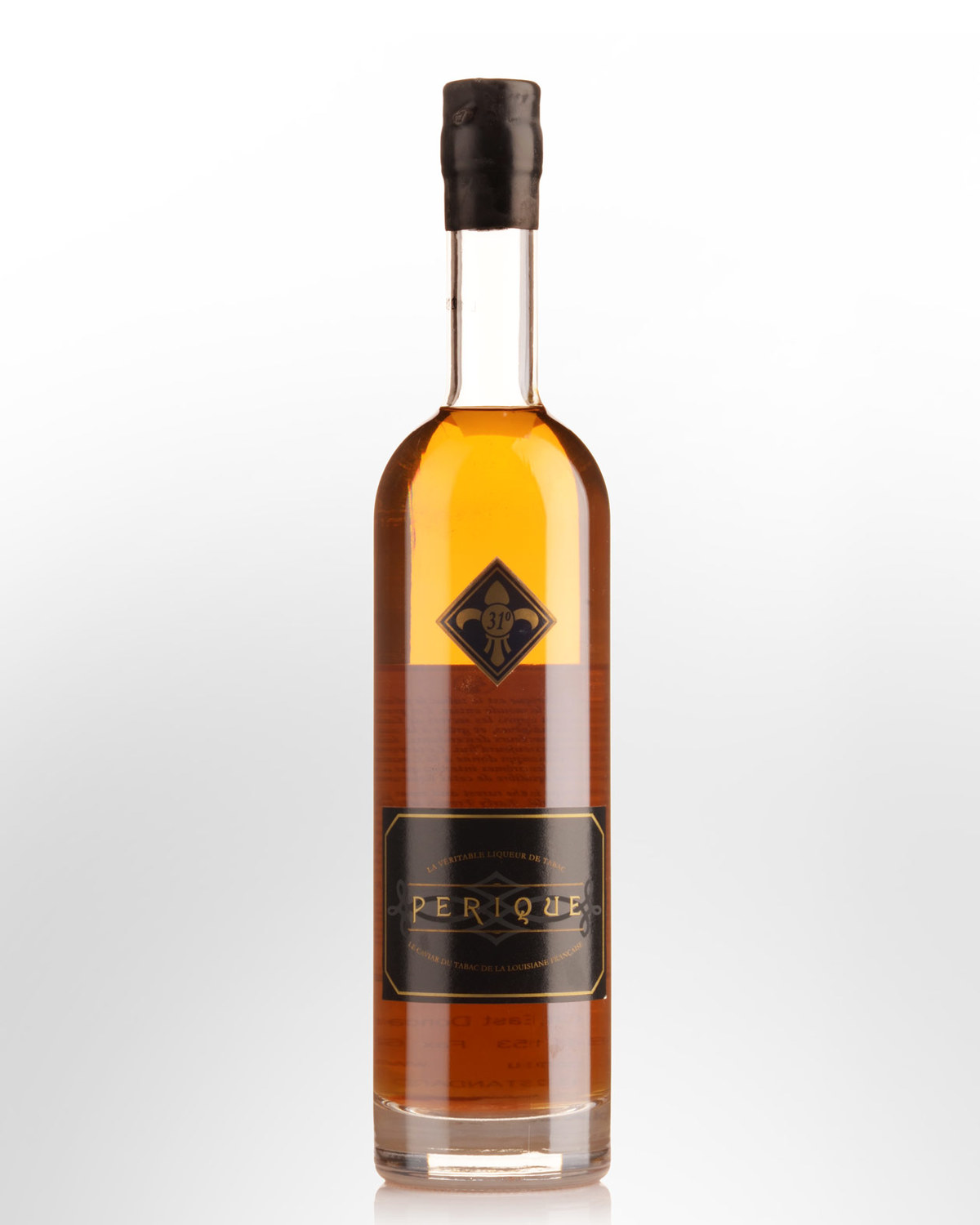
- 93
- Nick's Import
Perique Tobacco Liqueur (500ml)
In the world of liqueurs Perique stands as a unique achievement, that like fine wines, has taken a combination of expertise, culture and terroir to realise.
Created by Ted Breaux - the man behind many of the world's finest absinthes - Perique debuted in 2006. It is based on the rare Perique tobacco grown in Saint James Parish in Louisiana, USA, coined "the caviar of tobaccos" and prized for its strong fruity aroma. Very much a contemplative drink in our view, it has already been embraced by bartenders and mixologists looking for a safe alternative to homemade products. Due to the rarity of the Perique tobacco, the liqueur is itself difficult to source - and probably always will be.
Sitting at the drier end of the liqueur spectrum, very little sugar is used so as to allow the complexity of the tobacco take centre stage. Spices, orange rind, cognac rancio, cacao beans and a refreshing, almost cooling tang on the palate are among the descriptors commonly used for the liqueur, which is carried by an incredibly smooth eau de vie. There's a curious mix of aromas suggesting aniseed, caraway and orange peel with a subtle tobacco top note (think of fresh rolling tobacco rather than cigars). The soft, silky entry builds in concentration into a quasi-sambuca-like experience that’s semi-sweet (candied orange), herbal and very gently warming. Hints of sweet tobacco emerge in the aftertaste which is dry and fresh, rounding off this liqueur nicely. What is, presumably, the flavour of the perique tobacco seems to return late with surprising intensity and persistence. Overall it's a fascinating, unique and nuanced liqueur that demands tasting and re-tasting to fathom. Just as fascinating is the story behind its creation, which is detailed below. 31% Alc./Vol.
Other reviews... Aroma: Clean horse stables, old leather saddles in a tack room with Lady Grey Tea, fresh tobacco leaf and lemon drizzle cake. Taste: Slightly sweet, old leather briefcase, tobacco and stewed tannic lemon tea with a faint soapy note and anise. Aftertaste: Bitter stewed tea, the last knockings of a fat cigar and liquorice. Fades with stewed black tea flavours. 4.5 Stars - diffordsguide.com
On a business visit to Japan in 2004, Franck Choisne, head of France’s prestigious Combier Distillery, noted the complaints of some prominent barmen in Osaka regarding their difficulties sourcing the tobacco ‘cordials’ typically used in their cocktails. Recognising an opportunity to break into a new market, Franck brought samples back to the distillery in Saumur. He presented them to the person he thought would be best suited for the task: Ted A. Breaux.
Those already in the know will be familiar with Ted, a biochemist and researcher who grew up in New Orleans. Ted rose to fame when he cracked the “Absinth code” in the late 1990s, employing gas chromatography to analyse an old sample of the now legendary Pernod “Tarragona” and Edouard Pernod liqueurs he’d scored in a dusty estate auction. Ted subsequently set up a business, ‘Jade Liqueurs’, with the aim of recreating several ‘rediscovered’ Absinthes.
The tobacco liqueur samples immediately flared Ted’s imagination and he took on the project wholeheartedly, adopting the same philosophy he’d applied for his Absinthe recreations: Make no compromises and seek out only the best raw materials.
Being a native of Louisiana, he knew of the production of a very rare and highly prized tobacco in the area between Baton Rouge and New Orleans: the Perique tobacco. Coined the “cognac” or “truffle”of tobaccos, Perique only grows in the St James Parish, flourishing along the Grande Pointe Ridge, on the rich alluvial soils skirting the Mississippi. Attempts to grow the seeds elsewhere have never replicated its distinctive and robust flavours.
Its cultivation in the area goes back some 200 years with an industry that peaked at 1100 acres in the early 1940’s. The tobacco’s potential was first fully realised by Pierre Chenet, part of a wave of Acadian immigrants forced out of Nova Scotia in the late 18th century who finally settled in the Bayou Teche area of Louisiana. Chenet became acquainted with the tobacco being produced by the Choctaw and Chickasaw natives who cured the leaves by fermenting them in a hollow tree stump under pressure by way of a lever and a heavy stone.
Learning all he could from the Indians, he refined the curing process to turn it into a commercially viable operation. The tree stump was replaced by Hickory whiskey barrels where the “torquettes” of tobacco leaves could ferment under pressure applied by jackscrews. The resulting anaerobic fermentation that takes place over 12 months is considered just as essential to Perique’s aromatic glory as the “Magnolia soils” it’s grown in. In short, “If you don’t ferment it, you ain’t got no Perique”. So quips Percy Martin, the modern day Cajun patriarch of Perique growers. Today, only a handful of farmers look after a mere 16 acres of Perrique, tending to it with the same labour intensive processes perfected by Acadian settlers in 1824.
Not surprisingly, it remains highly sought after by pipe smokers the world around, however only small amounts of the tobacco actually make it into commercial blends. The aroma and taste are considered too potent on its own - hence its comparisons to truffles.
To create the Perique liqueur, Ted Breaux considered the Combier Distillery a logical choice (it is famed for the production of the world’s first Triple Sec liqueur in 1834). More importantly, the distillery owns unique Egrot stills, considered benchmarks for Absinthe distillation, as well as two other units identical to those in use for the production of Chartreuse and Benedictine liqueurs, that can only be found in three distilleries worldwide. It took Ted and his team about 18 months of trials to reach what they considered to be the best expression of the Perique aroma in a liqueur that was also free of the noxious substances generally associated with tobacco.
to most of Australia
